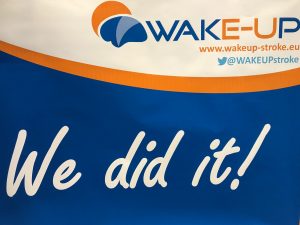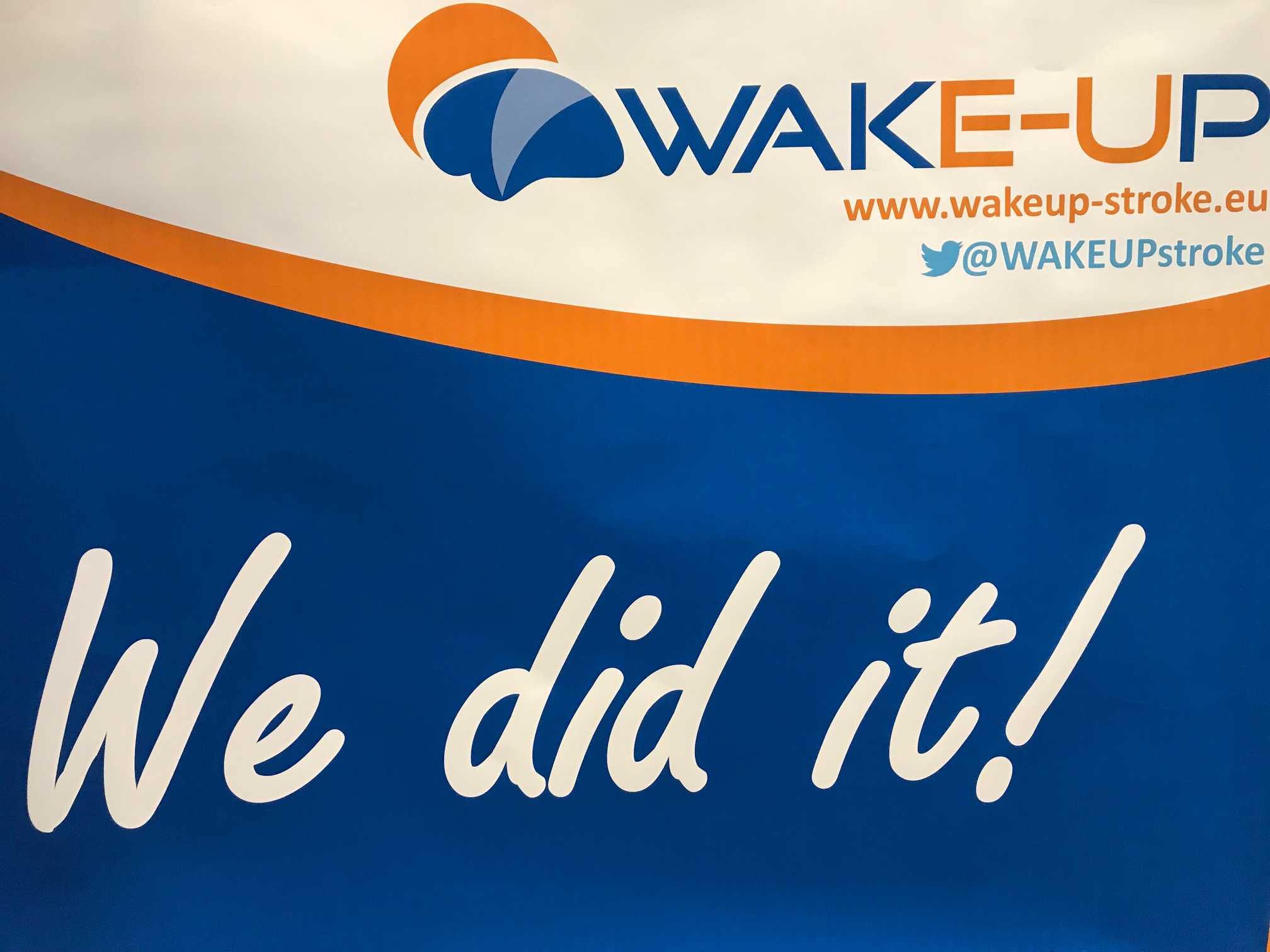Gothenburg, Sweden, 16 May 2018- The main results of the European WAKE-UP trial will be/have been presented on 16 May at the European Stroke Organisation Conference (ESOC).
At the same time, the trial results will be/have been published in the New England Journal of Medicine. The trial demonstrates that MRI-selected stroke patients with unknown time of stroke onset benefit from thrombolysis. These results will enable effective treatment of a large group of stroke patients currently excluded from intravenous thrombolysis.
WAKE-UP was a European multicentre investigator-initiated randomized placebo-controlled clinical trial of MRI based thrombolysis in acute stroke patients with unknown time of symptom onset, e.g. due to recognition of stroke symptoms on awakening. The trial was conducted at 70 centers in 8 European countries, and was led by Prof. Prof. Götz Thomalla from the Dept. of Neurology at the University Medical Center Hamburg-Eppendorf (UKE). The study received funding from the 7th framework programme of the European Union. Among academic partners, the European patient organisation Stroke Aliance for Europe (SAFE) was partner of the scientific consortium that organized the study. The consortium was coordinated by Prof. Christian Gerloff, head oft he Dept. of Neurology at UKE. The objective of WAKE-UP was to test efficacy and safety of MRI-based intravenous thrombolysis with Alteplase in patients waking up with stroke symptoms or patients with unknown symptom onset. By this, WAKE-UP aimed at providing a new safe and effective treatment option for acute stroke patients waking up with stroke symptoms.
WAKE-UP enrolled patients with acute ischemic stroke and unknown time of stroke onset 18-80 years of age who did not have any contraindication against thrombolysis, and who were not planned for thrombectomy. Patients were studied by MRI with the combination of two different MRI sequences to predict whether a patient is likely to benefit from thrombolysis. The first scan, called diffusion weighted imaging (DWI), shows early changes in the brain after stroke whereas changes take several hours to become obvious in the second type of scan called FLAIR (fluid-attenuated inversion recovery). Previous scientific works has shown that patients with an ischemic lesion visible on DWI while no clear signal change is obvious on FLAIR (i.e., the so-called DWI-FLAIR-mismatch) are likely to be within 4.5 hours of symptom onset and thus likely to benefit from thrombolysis. WAKE-UP randomized patients with DW-FLAIR-mismatch to treatment with alteplase or placebo. After 22-36 hours, follow-up MRI was performed to detect intracranial hemorrhage and to study final infarct volume. Clinical outcome was assessed at 90 days using established neurological scales. Primary endpoint was the proportion of patients with favorable outcome, i.e., showing no or only minimal neurological deficit without disability at 90 days.
Overall, 503 patients were randomized. Treatment with alteplase was associated with a significantly higher rate of favorable outcome. 53.3% of patients treated with alteplase achieved a favorable outcome, as compared to 41.8% in the placebo group, representing an absolute increase of 11.5% in the alteplase group. Beyond the proportion of patients with favorable outcome, treatment with alteplase resulted in a shift towards better outcomes across all ranges of disability with an odds ratio of 1.62, i.e., a 62% increased odds of having a better functional outcome. Moreover, patient reported health state and quality of life were also significantly better in patients treated with alteplase.
Stroke is the second most frequent cause of death and the most frequent cause of permanent disability in adults in the western world. An ischemic stroke is a brain attack which happens when the blood supply to the brain is cut off, caused by a clot. As a result, the adjacent brain tissue dies within minutes to hours. The clot obstructing the arty can be dissolved with medical treatment, i.e., thrombolysis. If this is done timely and before a severe damage to the brain has occurred, permanent neurological symptoms and disability can be averted.
Intravenous thrombolysis is the standard treatment for acute ischemic stroke, and it is effective and safe if given within 4.5 hours of known symptom onset. Up to 20 per cent of stroke patients, however, wake up with stroke symptoms so the time the stroke started is unknown. Unwittnesed stroke in patients with severe disturbance of speech or consciousness are further reasons why the time of symptom onset may be unknown. This makes patients ineligible for treatment with alteplase, as alteplase is only approved for patients within 4.5 hours after the start of stroke symptoms. Every year about two million patients have a stroke in the EU, including approximately 400.000 patients with unknown time of symptom onset stroke.
„The positive result of WAKE-UP is a milestone towards further improvement of the treatment of acute stroke, as the trial opens the window for treating a large number of patients that have been excluded from thrombolysis until now.”, says Prof. Thomalla. „Treatment based on MRI-selection without knowing the time of symptom onset represents a paradigm change for acute stroke thrombolysis..“
„The results of WAKE-UP will have an immediate impact on clinical practice and guidelines of stroke treatment. MRI-based thrombolysis will become standard of care.“, says Prof. Gerloff. „Based on the trial results, we will be able to avert stroke-related disability in the future for many thousands of stroke patients.“
For more information on WAKE-UP trial, please visit https://www.wakeup-stroke.eu/
The trial results have been published in the New England Journal of Medicine, NEJM, DOI 10.1056/NEJMoa1804355, URL www.nejm.org/doi/full/10.1056/NEJMoa1804355.




0 Comments